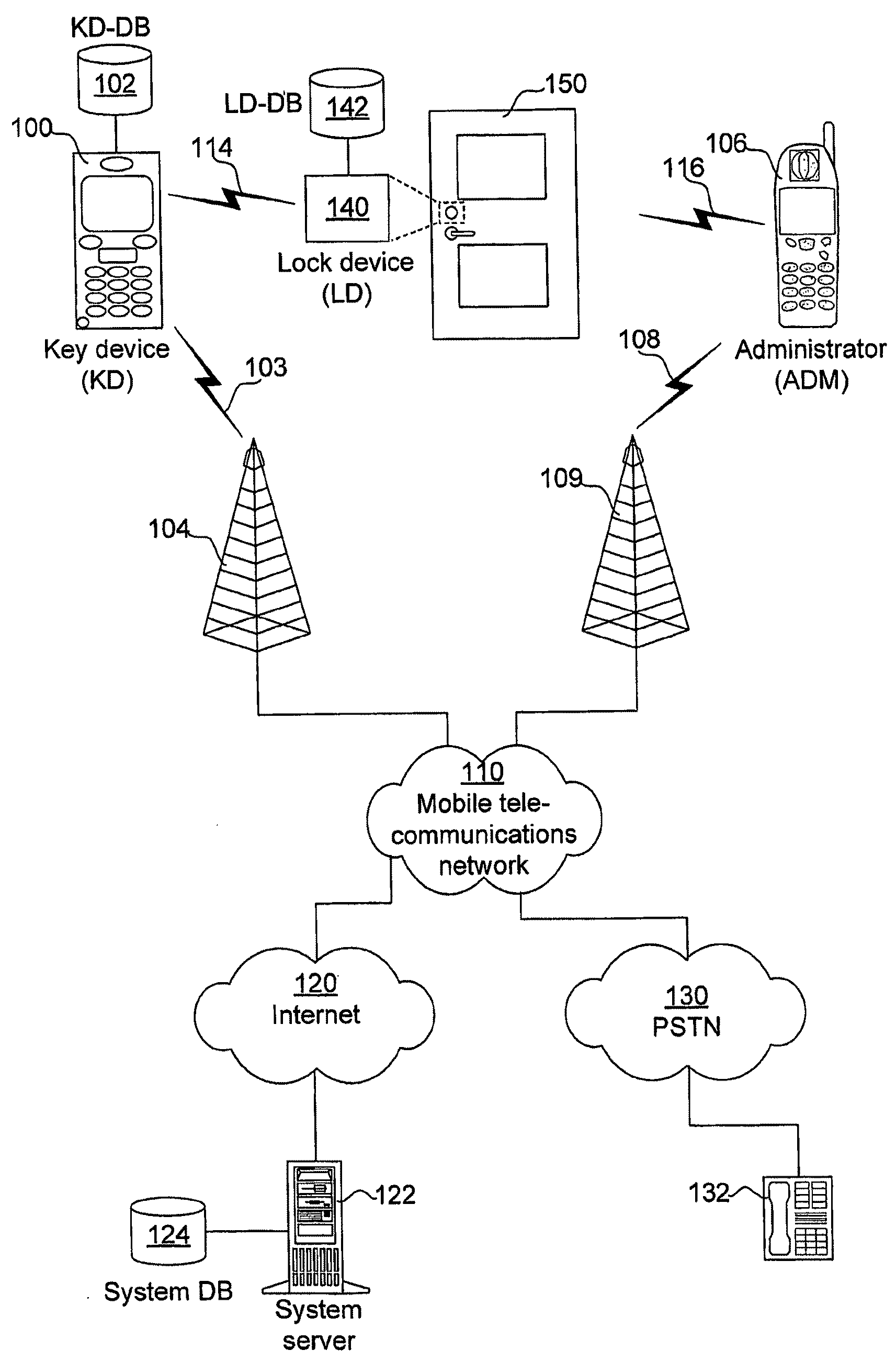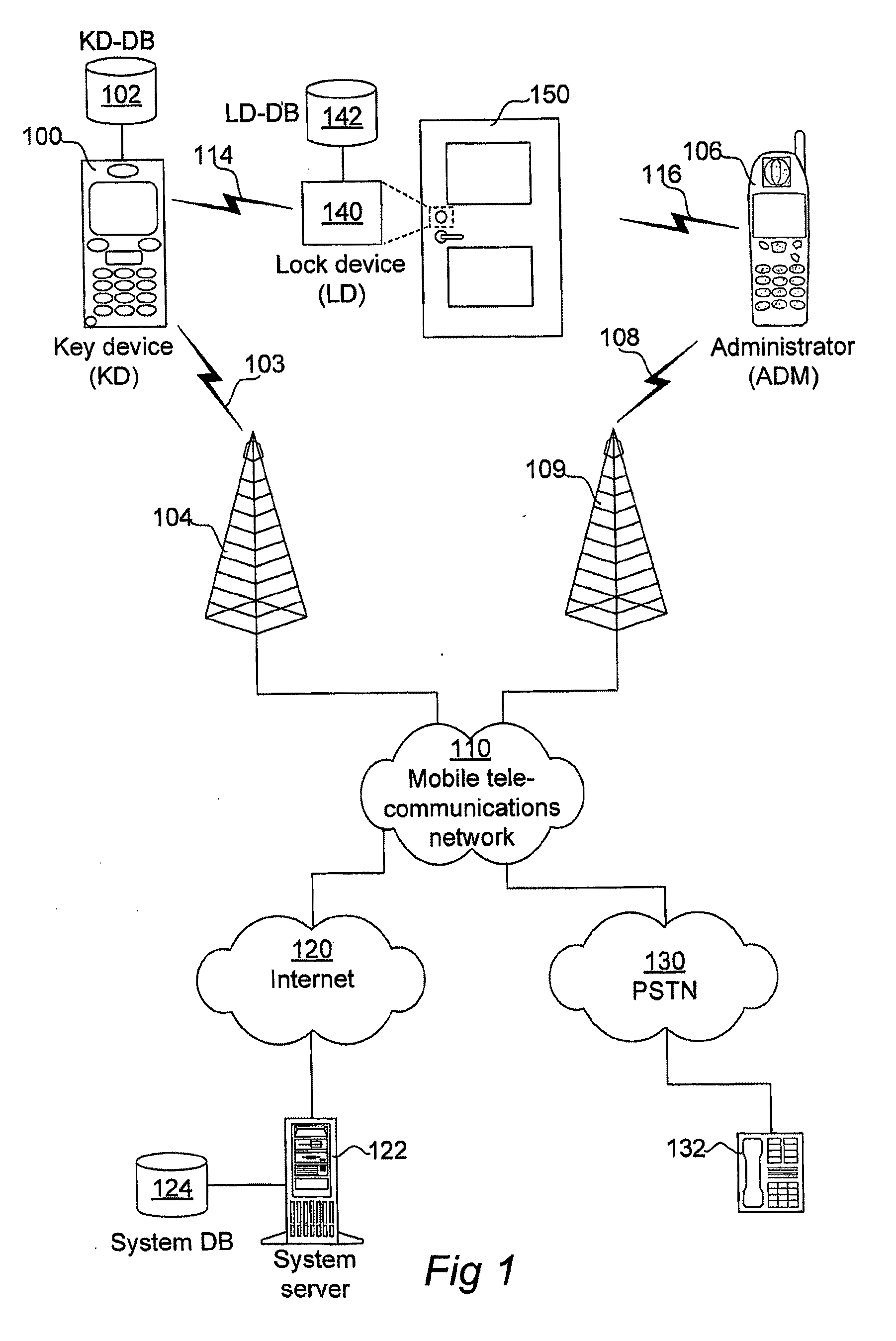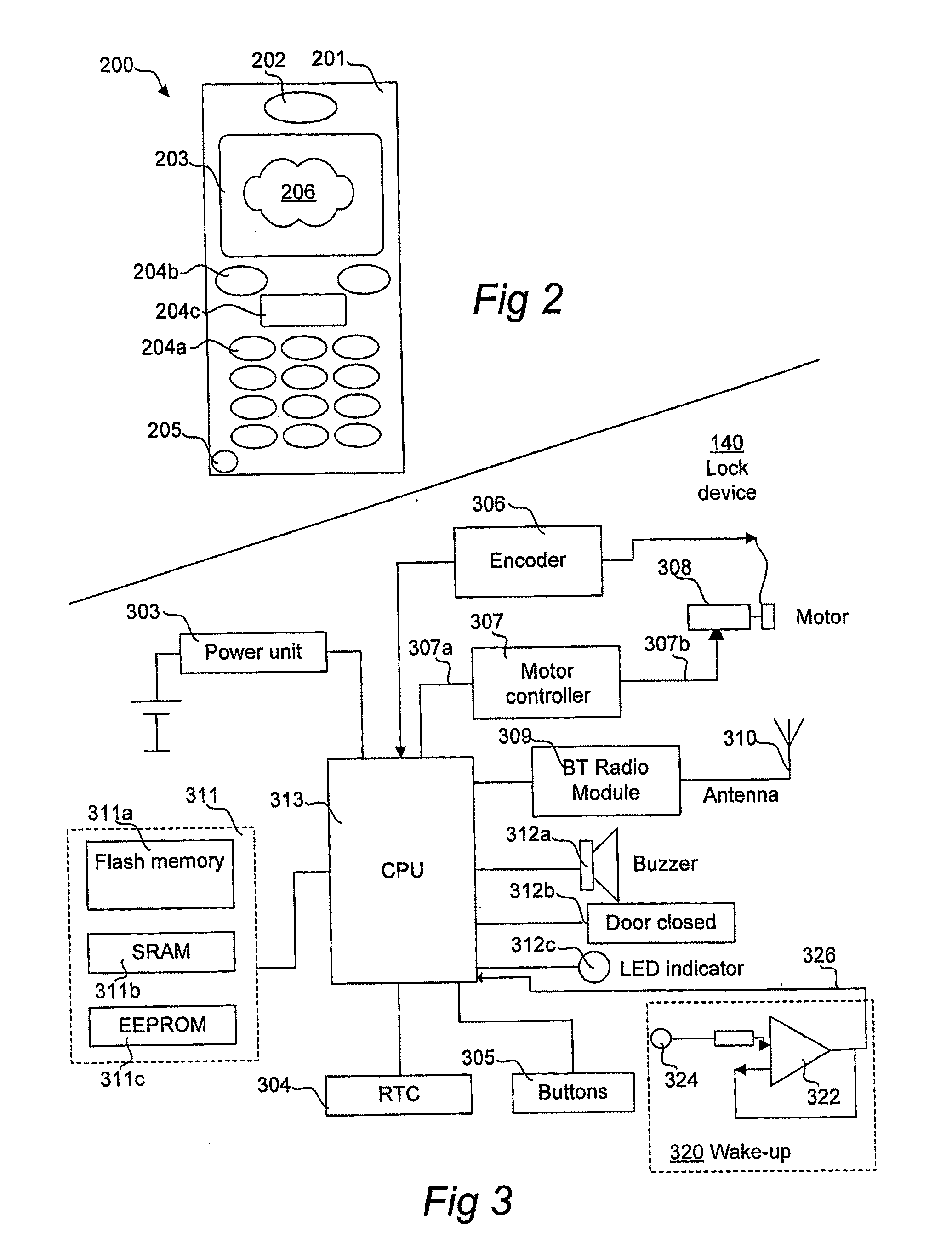Method for Unlocking a Lock by a Lock Device Enabled for Short-Range Wireless Data Communication in Compliance With a Communication Standard and Associated Device
a technology of short-range wireless data communication and lock device, applied in the field of access control, can solve the problems of high cost, unhandling, and considerable security risk, and achieve the effect of reducing the cost of administration, reducing the risk of theft, and reducing the service li
- Summary
- Abstract
- Description
- Claims
- Application Information
AI Technical Summary
Benefits of technology
Problems solved by technology
Method used
Image
Examples
Embodiment Construction
[0077]The present invention is advantageously implemented in a mobile telecommunications system, one example of which is illustrated in FIG. 1. Central elements in FIG. 1 are a wireless key device (KD) 100 and a wireless lock device (LD) 140. The purpose of the lock device 140 is to control some sort of lock mechanism in a lock, which in the illustrated example is a door lock on a door 150. In turn, the lock device 140 is operated by the key device when brought in the vicinity of the lock device. In more particular, both the key device 100 and the lock device 140 are enabled for short-range wireless data communication in compliance with a communication standard. In the preferred embodiment, this communication standard is Bluetooth™. Having been the de facto standard for short-range wireless data communication for mobile devices during several years already, Bluetooth™ is believed to be very well known to the skilled person, and no particulars about Bluetooth™ as such are consequentl...
PUM
 Login to View More
Login to View More Abstract
Description
Claims
Application Information
 Login to View More
Login to View More - R&D
- Intellectual Property
- Life Sciences
- Materials
- Tech Scout
- Unparalleled Data Quality
- Higher Quality Content
- 60% Fewer Hallucinations
Browse by: Latest US Patents, China's latest patents, Technical Efficacy Thesaurus, Application Domain, Technology Topic, Popular Technical Reports.
© 2025 PatSnap. All rights reserved.Legal|Privacy policy|Modern Slavery Act Transparency Statement|Sitemap|About US| Contact US: help@patsnap.com



